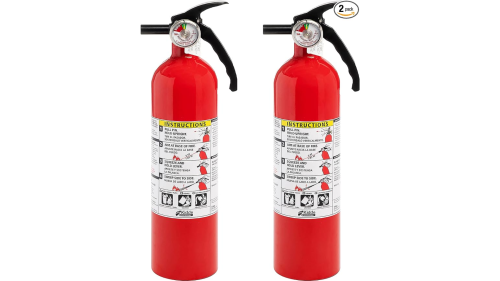Electricity is such a common part of our lives that it’s easy to forget the hazards associated with electrical currents, namely fires. According to the U.S. Fire Administration, approximately 24,000 residential building fires occur each year. What’s more, these fires caused an estimated 295 deaths, 900 injuries and over $1.2 billion in property loss.
Electrical fire key facts
The USFA’s most recent “Residential Building Electrical Fires” report offers the following key facts about electrical fires:
- Residential building electrical fires occurred most often in one- and two-family dwellings (83%).
- Residential building electrical fires occurred most often in January (12%) due to increased use of heating appliances and lights.
- In only 17% of residential building electrical fires, the fire spread was limited to the object where the fire started.
- Residential building electrical fires most often started in bedrooms (15%), followed by attics or vacant crawl spaces (13%).
- Although most electrical fires start in the bedroom, the highest number of fatalities occur when fires originated in the living room, family room and den.
- The leading items most often first ignited in residential building electrical fires include electrical wire, cable insulation (31%) and structural member or framing (18%).
- The leading factors contributing to the ignition of residential building electrical fires were other electrical failure or malfunction (43%), unspecified short-circuit arc (23%), and short-circuit arc from defective or worn insulation (11%).
What causes electrical fire?
When educating members of your community about fire and life safety, it is important to include information about the common causes of electrical fires. Here are the 5 most common causes of electrical fires and tips about how to prevent electrical fires.
Electrical fire cause 1: Faulty outlets, appliances
Most electrical fires are caused by faulty electrical outlets and old, outdated appliances. Other fires are started by faults in appliance cords, receptacles and switches. Never use an appliance with a worn or frayed cord, which can send heat onto combustible surfaces like floors, curtains, and rugs that can start a fire. Running cords under rugs is another cause of electrical fires. Removing the grounding plug from a cord so it can be used in a two-prong electrical outlet can also cause a fire. The reason appliances have the extra prong is so they can be only used in outlets that can handle the extra amount of electricity that these appliances draw.
Electrical fire cause 2: Light fixtures
Light fixtures, lamps and light bulbs are another common reason for electrical fires. Installing a bulb with a wattage that is too high for the lamps and light fixtures is a leading cause of electrical fires. Always check the maximum recommended bulb wattage on any lighting fixture or lamp and never go over the recommended amount. Another cause of fire is placing materials like cloth or paper over a lampshade. The material heats up and ignites, causing a fire. Faulty lamps and light fixtures also frequently result in fires.
Electrical fire cause 3: Extension cords
Misuse of extension cords is another electrical fire cause. Appliances should be plugged directly into outlet and not plugged into an extension cord for any length of time. Only use extension cords as a temporary measure. If you do not have the appropriate type of outlets for your appliances, hire an electrician to install new ones.
Electrical fire cause 4: Space heaters
Because these types of heaters are portable, many times people put them too close to combustible surfaces such as curtains, beds, clothing, chairs, couches and rugs. Coil space heaters are especially dangerous in this regard because the coils become so hot they will almost instantaneously ignite any nearby flammable surface.
If you do use space heaters, use the radiator-type that diffuse heat over the entire surface of the appliance. These are less likely to ignite flammable items, but should still be kept away from them.
Electrical fire cause 5: Wiring
Outdated wiring often causes electrical fires. If a home is over 20 years old, it may not have the wiring capacity to handle the increased amounts of electrical appliances in today’s average home, such as computers, wide-screen televisions, video and gaming players, microwaves and air conditioners. Breakers should be triggered when circuits get overloaded by too much electricity, but outdated breaker boxes often have worn connectors that do not work, causing the system to overload and start an electrical fire.
What does an electrical fire smell like?
An electrical fire often smells like burning plastic or rubber — a strong, acrid, and distinctly unpleasant odor, which can be a sign of overheating or faulty wiring.
Besides the smell, other warning signs of an electrical fire include a sizzling sound, tripping breakers and blown fuses, discolored outlets, sparks or flames, and charred wires or melted plastic.
How to prevent an electrical fire
The USFA offers the following electrical fire safety tips and messages:
Appliances:
- Always plug major appliances — refrigerators, stoves, washers and dryers — directly into a wall outlet.
- Never use an extension cord with a major appliance. The extension cord can overheat and start a fire.
- Unplug small appliances when you are not using them.
- Keep anything that can burn away from lamps, light fixtures and light bulbs.
- Use lightbulbs that match the recommended wattage on the lamp or fixture.
- If the appliance has a cracked, damaged or loose cord, replace the appliance.
Electrical: Outlet safety
- Do not overload outlets.
- Insert plugs fully into sockets.
- Never force a 3-prong cord into a 2-slot outlet.
- Install tamper-resistant electrical outlets if you have young children.
- Replace wall outlets if plugs do not fit snugly.
Electrical: Extension cord, power strips and surge protection safety
- Do not overload power strips.
- Use power strips that have internal overload protection.
- Replace worn, old or damaged extension cords right away.
- Avoid putting cords where they can be damaged or pinched, like under a carpet or rug.
How to put out an electrical fire
If an electrical fire starts, follow these steps:
- Cut off the electricity. If the device that is causing the electrical fire is found, and you can reach the cord and outlet safely, unplug it.
- Add sodium bicarbonate. If the fire is small, you may put it out by smothering it with baking soda.
- Remove the oxygen source. It may also be put out by removing the oxygen source with clothing or a heavy blanket if the fire is small and it is safe to do so.
- Don’t use water to put it out. Water is a natural conductor of electricity and if you throw water on an electrical fire, you can get shocked or electrocuted. Also, water may enable to fire to spread by conducting electricity throughout the room and potentially igniting flammable materials.
- Check your fire extinguisher. Electrical fires are a Class C fire, which means that you will need an extinguisher that is appropriate for this type of fire. Most residential fire extinguishers are multi-purpose and labeled ABC, but it is crucial to verify this before using it on an electrical fire.
Read more about how to extinguish an electrical fire.
This article, originally published in 2011, has been updated with newer statistics and safety information.
















